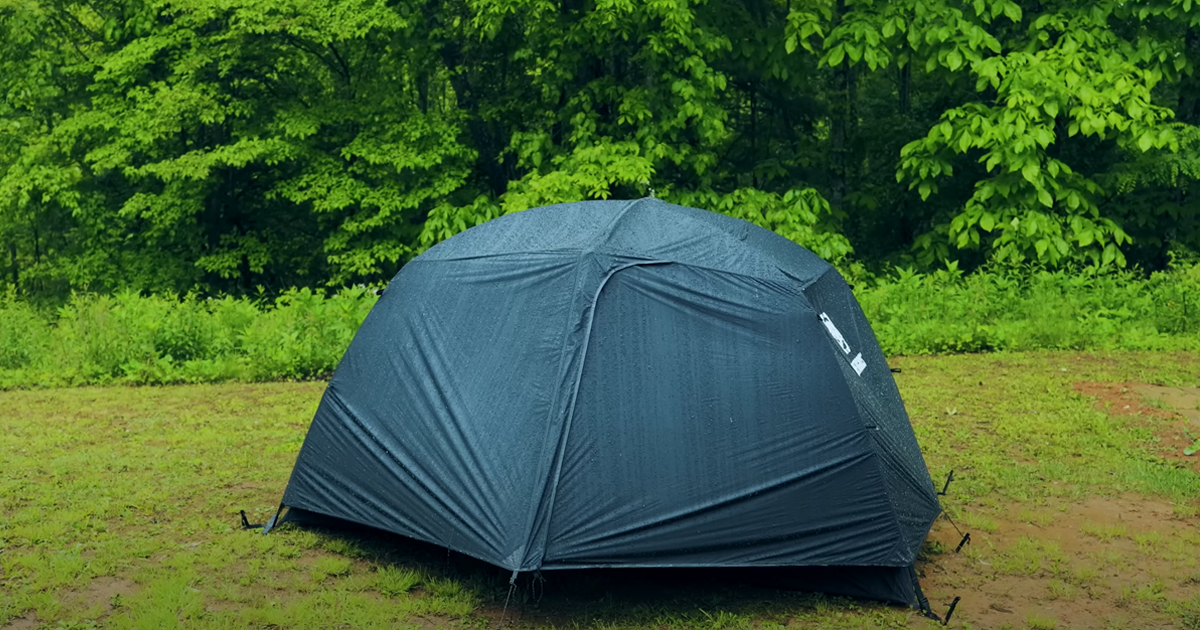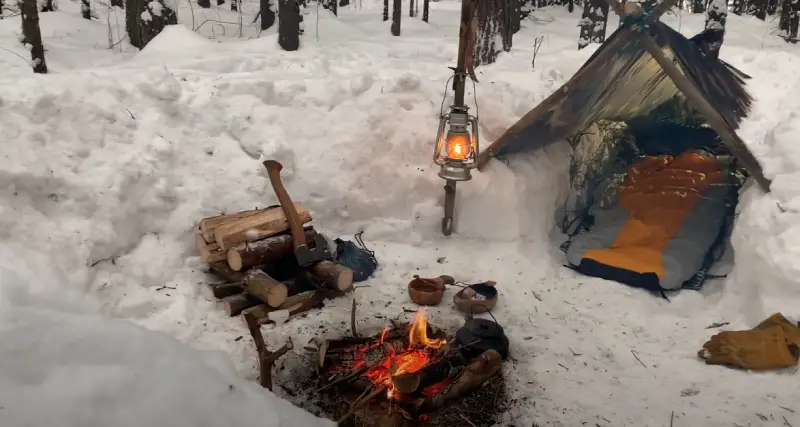Are Camping Tents Waterproof: 5 Factors [Life-Saving]
The experience of having a tent that wasn’t adequately waterproofed made me realize the significance of investing in quality camping gear. It taught me about mold and mildew prevention and the dangers of hypothermia.
This knowledge not only helped me protect myself but also ensured the safety of my pets. The experience, though challenging, made me a more responsible and informed camper. It highlighted the importance of waterproofing my camping gear.
Very few tents are entirely waterproof, from my experience. This means they can withstand light rain or showers but will not hold up in heavy rain or prolonged exposure to moisture.
In that blog post, I explored why camping tents are waterproof and the factors affecting their imperviousness. I discovered how to protect my tent adequately and read tips for extending its life.
Are Camping Tents Waterproof: 5 Factors that Affecting It
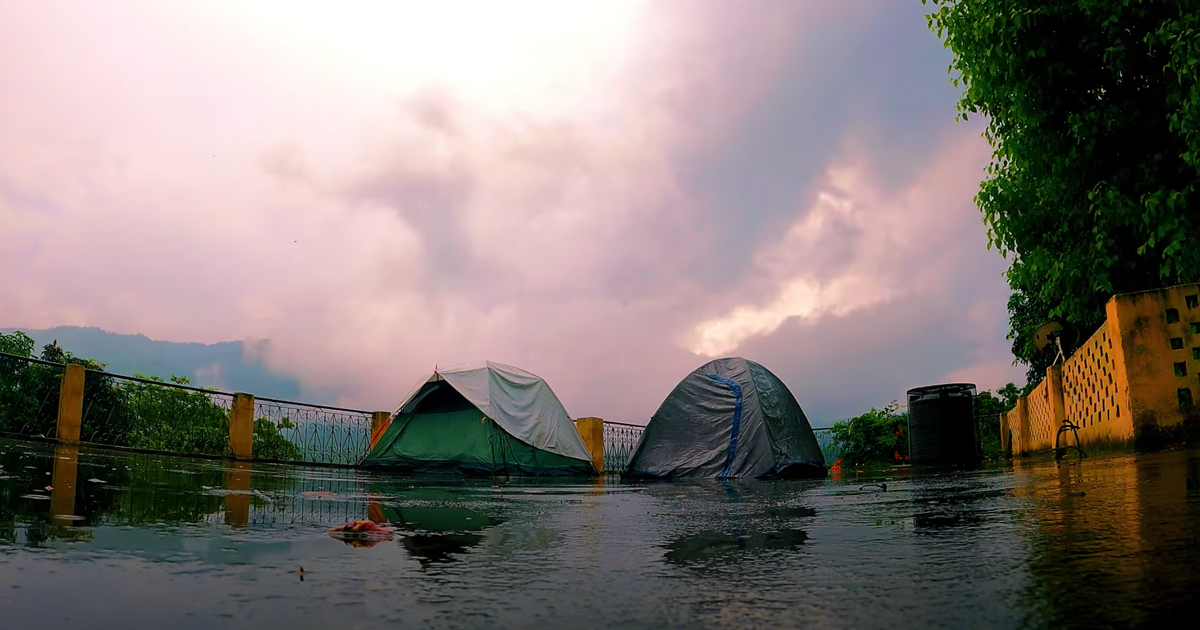
When I went camping, the waterproofness of my tent was one of the most important considerations. Several factors affected this, and understanding them helped ensure I had a dry and comfortable camping experience.
Waterproof Coatings
One of the most critical aspects of the camping tent I used was its waterproof coating. Various waterproof coatings were available to ensure my tent remained dry even in the wettest weather. Here are some of the common ones I encountered:
- Polyurethane: This type of coating was known for its excellent water resistance and durability. It was often used for the modern tents designed for ultra-light backpacking, like the one I had.
- Silicone: This coating was another popular option when considering waterproof tents. It was best known for its flexibility, as it could maintain its waterproofness even in extreme weather, which I found very useful during my camping trips.
Tent Fabrics
Apart from coatings, the fabric of the tent I used was also crucial in ensuring it was waterproof. Here are a few tent fabrics that offer excellent waterproofness:
- Nylon: This synthetic fabric was popular among campers like me because of its lightweight and water-resistance capabilities. It was often used in backpacking tents and other lightweight tents that I came across.
- Polyester: This synthetic fabric was like nylon fabric, as it was lightweight and highly resistant to water. It was often used in budget-friendly tents.
Seams and Stitching
Seams and stitching were vital in keeping the rain out for the waterproof tent I used. A poorly sewn tent would allow water to seep through the seams. If you wanted a tent that could withstand heavy rain, you would look for one with:
- Taped seams: These were most commonly used on expensive tents. They had a strip of waterproof tape applied over the entire tent, preventing water from seeping.
- Double-stitched seams: These were often found in budget-friendly tents. They were sewn with a double stitch, which ensured better water resistance.
Zippers and Closures
Zippers and closures were another entry point for rain and moisture. Water could easily seep into my tent when zippers weren’t working correctly. When purchasing a waterproof tent, I looked for the following:
- Quality zippers: I opted for YKK zippers, as they were known for their durability and waterproofing capabilities.
- Flap covers: These were often found in high-end tents. They cover the zipper and provide additional protection against the elements.
Flysheet and Vestibule
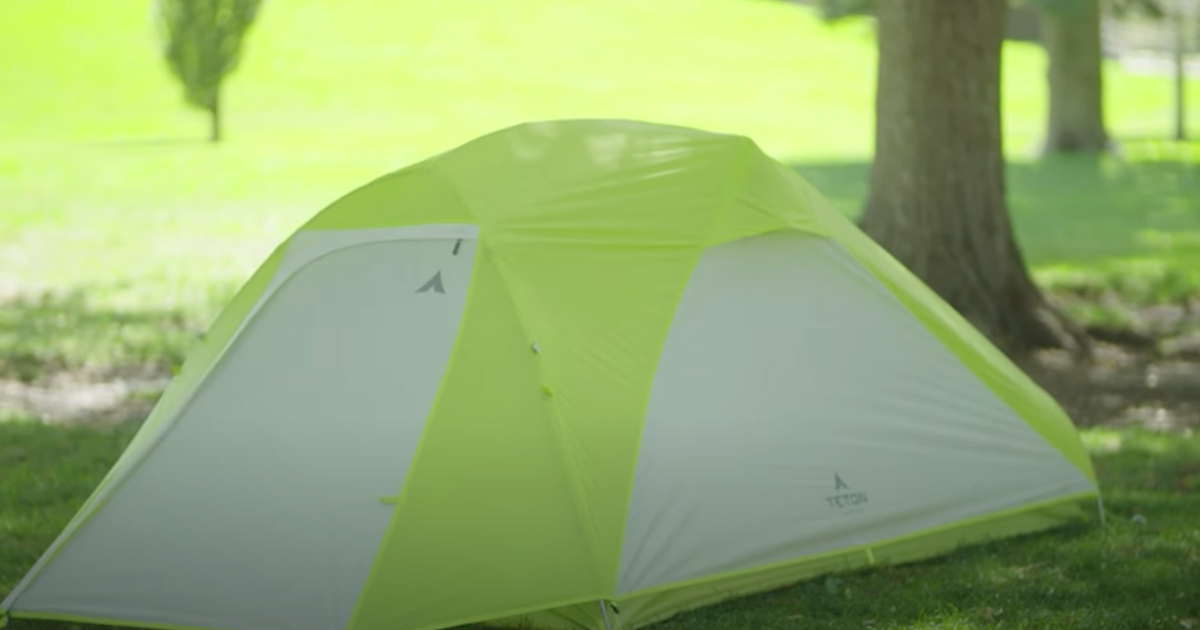
Design A flysheet and vestibule were essential to my waterproof camping tent. The flysheet was the tent’s outer layer, providing extra protection against the rain. The vestibule was a small area at the tent’s entrance, providing additional space to store items and keep them dry. When choosing a waterproof tent, I considered:
- Full-cover flysheet: This type covers the entire tent, including the vestibule, providing the best protection against the rain.
- Large vestibule: I looked for a tent with a generous vestibule that provided enough space to keep my gear dry and easy to access.
3 Ways To Extend Tent’s Waterproof Lifespan
Proper storage and ventilation were crucial to maintaining my waterproof tent. They ensured my tent continued to provide reliable shelter on my camping trips.
As a result, I stored and ventilated my tent correctly, extending its lifespan and preventing any damage or deterioration. Here are some tips I followed for proper storage and ventilation of my waterproof tent:
Proper Storage and Ventilation
I realized that one of the most critical factors in maintaining my waterproof tent was proper storage and ventilation. Following these tips, I ensured my tent stayed dry and mold-free:
- Store my tent in an excellent, dry location permanently.
- Store my tent away from direct sunlight or damp areas, which could deteriorate the waterproof coating.
- I opened the tent’s windows and doors to ensure adequate air circulation.
- Before packing my tent, I confirmed it was dry and moisture-free.
Cleaning and Maintenance of Coatings
To maintain the waterproof capabilities of my tent, I took care of the coating. Listed below are some tips I used for cleaning and maintaining my tent’s coatings:
- When cleaning my tent, I avoided harsh cleaning agents or detergents. To clean the fabric gently, I used warm water and mild soap.
- My tent was always thoroughly rinsed and dried before being stored.
- A washing machine or dryer did not damage the waterproof coatings of my tent.
- I restored the waterproof coatings using a waterproofing spray or solution. This was done annually or after prolonged use.
Retreating a Tent
If I wanted to keep my tent waterproof, it was essential to apply a water-resistant treatment regularly. I followed these tips when retreating from my tent:
- The best results come from reading the manufacturer’s instructions.
- To waterproof the tent’s fabric, I sprayed it evenly.
- Working in small areas, I applied the solution thinly and evenly.
- I allowed the tent to dry completely before using it.
Testing a Tent’s Waterproofness: 4 Methods
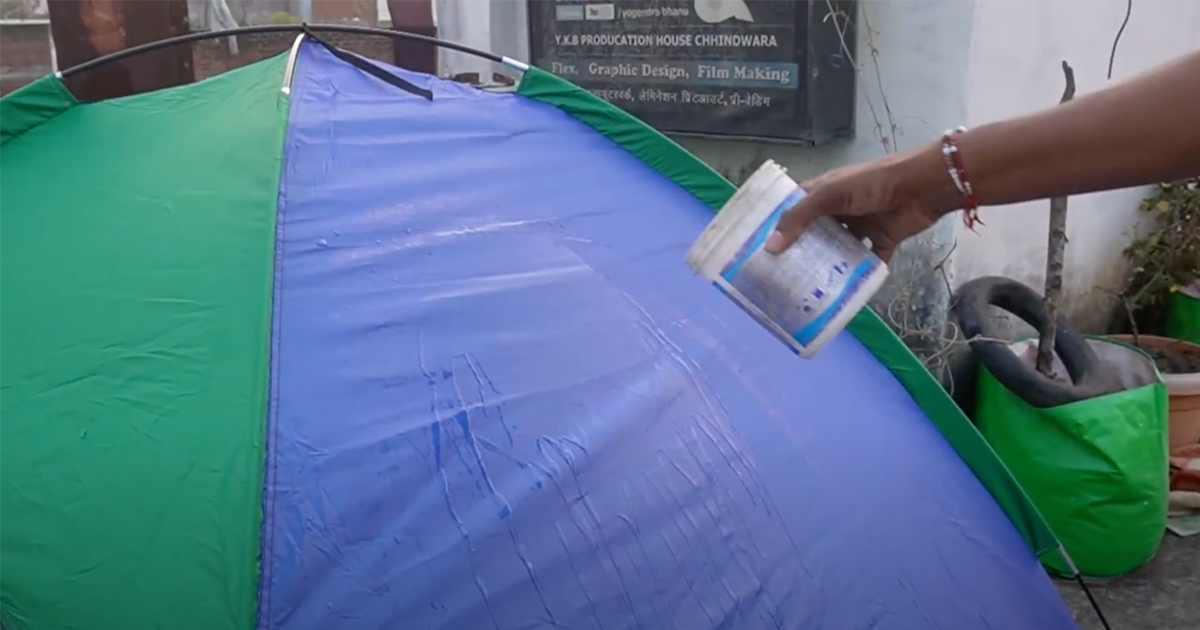
As a camping enthusiast and pet owner, I understand the importance of having a waterproof tent to protect my four-legged companion and myself from the elements. However, how do you know if the tent is genuinely waterproof? That’s where testing methods come in. Here are some techniques for testing a tent’s waterproofness.
The Hose Test
One of the easiest ways to test a tent’s waterproofness was to use a hose. The tent was set up in my backyard, and a garden hose was used to simulate rainfall. I paid attention to the seams and the areas where water could enter the tent. If I noticed any leaks, I marked them and tested again until satisfied that the tent was fully waterproofed.
The Bucket Test
Another simple way to check if a tent is waterproof is through the bucket test. I filled a bucket with water and placed it inside the tent. I checked for leaks around the areas where water might enter the tent. If I found leaking areas, I marked them and repeated the process until I was confident that the tent was completely waterproof.
The Shower Test
If I wanted to simulate rain in a more controlled manner, I tried using a shower. I set up the tent in my bathroom or another suitable indoor location and set the shower to moderate rainfall.After 10-20 minutes of showering, I checked for any leaks and marked them as needed.
The Rain Test
Nothing beats testing my tent’s waterproofness in real-world conditions. I planned a camping trip and waited for a rainy day. I set up my tent and waited for the storm to pass. I checked for any leaks in the morning and marked them if necessary.
7 Tips For Choosing a Waterproof Tent
If you are in the market for a waterproof tent, I recommend you research and read reviews of different tents before purchasing. A wide variety of waterproof tents are available on the market, so you should be able to find one that suits your needs.
- Look for a tent made with waterproof materials: Polyester and nylon are both commonly used for making waterproof tents.
- Check the tent’s seams: Seams must be sealed to prevent water from leaking out.
- Read the tent’s specifications: The tent’s specifications should clarify whether the tent is waterproof.
- Test the tent in light rain: Test it before you take it on a camping trip to see if it can withstand light rain.
Additional Tips For Keeping Your Tent Waterproof
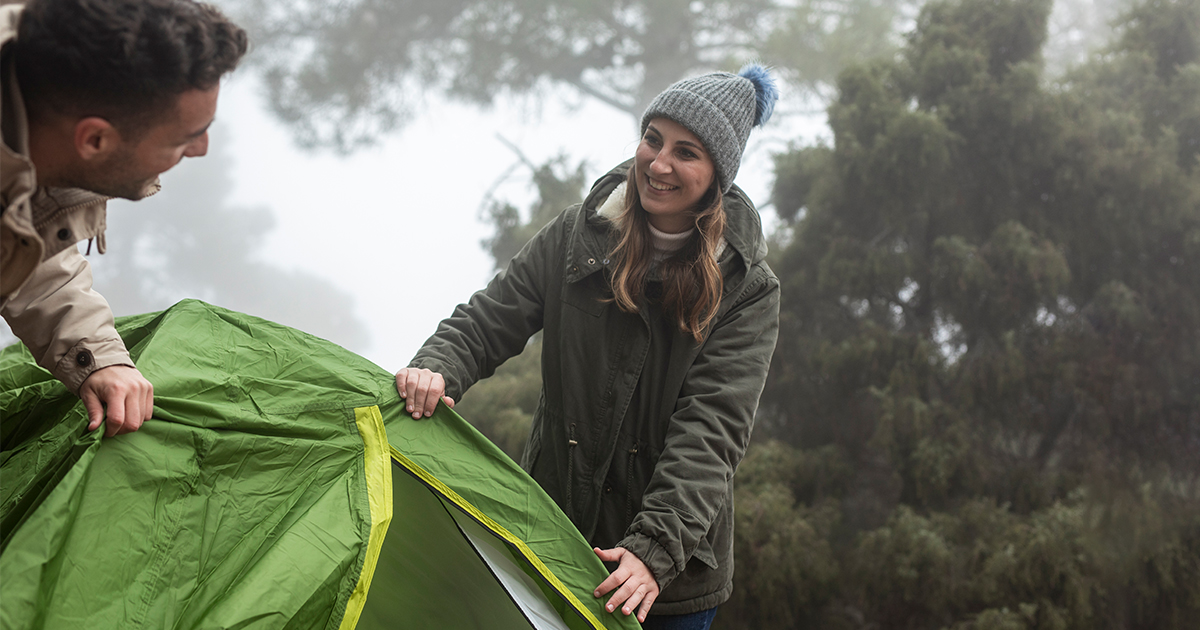
- Store your tent dryly. You should store your tent in a dry place when not in use so it doesn’t get wet.
- Clean your tent after each use. Make sure you clean off any dirt or debris that might cause your tents to leak after each use.
- Repair any leaks immediately. You should immediately repair a leak in your tent to prevent further water damage.
Conclusion
A waterproof tent is essential for a comfortable and stress-free camping experience. Investing in a tent with quality waterproof coatings, durable fabrics, taped or double-stitched seams, reliable zippers, and an adequate flysheet and vestibule ensured that I and my gear stayed dry and protected from the elements.
Properly storing and ventilating my tent were critical to prevent mold, mildew, and deterioration that could compromise its waterproofing capabilities. So, when I planned my camping trips in the past, I prioritized the waterproofness of my tent. Happy camping.
FAQs
How Do I Know If A Tent Is Waterproof?
The waterproof rating is essential to check on a tent before purchasing it. The rating is expressed in numbers followed by “mm” to show the pressure the tent fabric can withstand. For instance, a tent with a waterproof rating of 3000mm can withstand rainfall of that amount without leaking.
How Long Can Tents Be Waterproofed For?
Tents can stay waterproof for one to two years. It depends on several factors, including the quality of the tent and how well it’s maintained. It’s advisable to reproof your tent every six months to two years, depending on the frequency of use.
Even the best tents may eventually leak, so regular maintenance and reproofing are essential. When properly cared for, you will extend the lifespan of your tent’s waterproofing.
